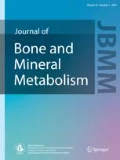Abstract
The aim of this study was to examine sex-specific relationships between insulin resistance (IR) and bone mineral content (BMC) according to age group and weight status. A population-based sample of 618 Korean adolescents (315 male and 303 female), aged 10–19 years from the Fourth Korea National Health and Nutrition Examination Survey, 2009. They were divided into three age groups (10–12; 13–16; 17–19 years) and two weight groups (non-overweight vs. overweight). IR was assessed using the homeostatic model of assessment of IR (HOMA-IR). Soft tissue composition (fat and lean mass) and BMC of the whole body, proximal femur, and lumbar spine were measured by dual energy X-ray absorptiometry. Adiposity (body mass index, waist circumference, or soft tissue composition), age, height, total cholesterol, triglycerides, high density lipoprotein cholesterol, alkaline phosphatase, serum vitamin D, dietary calcium and energy intake, and menarche for females were adjusted using general linear models of a complex sampling design. Higher HOMA-IR was associated with a decrease in BMC in male adolescents aged 13–19 years after adjustment for adiposity and other confounders, while the associations were not significant in male adolescents aged 10–12 years and female adolescents. After adjustment for adiposity and confounders, the inverse associations between HOMA-IR and BMC were more consistent in non-overweight male adolescents than in other weight groups (overweight males and non-overweight and overweight females). The unfavorable effect of IR on BMC appears to be more obvious in males aged 13–19 years or non-overweight males than in females.
Similar content being viewed by others
References
Hernandez CJ, Beaupré GS, Carter DR (2003) A theoretical analysis of the relative influences of peak BMD, age-related bone loss and menopause on the development of osteoporosis. Osteoporos Int 14:843–847
Ten S, Maclaren N (2004) Insulin resistance syndrome in children. J Clin Endocrinol Metab 89:2526–2539
do Prado WL, de Piano A, Lazaretti-Castro M, de Mello MT, Stella SG, Tufik S, do Nascimento CM, Oyama LM, Lofrano MC, Tock L, Caranti DA, Damaso AR (2009) Relationship between bone mineral density, leptin and insulin concentration in Brazilian obese adolescents. J Bone Miner Metab 27:613–619
Afghani A, Cruz ML, Goran MI (2005) Impaired glucose tolerance and bone mineral content in overweight Latino children with a family history of type 2 diabetes. Diabetes Care 28:372–378
Pollock NK, Bernard PJ, Gutin B, Davis CL, Zhu H, Dong Y (2011) Adolescent obesity, bone mass, and cardiometabolic risk factors. J Pediatr 158:727–734
Pirgon O, Bilgin H, Tolu I, Odabas D (2011) Correlation of insulin sensitivity with bone mineral status in obese adolescents with nonalcoholic fatty liver disease. Clin Endocrinol (Oxf) 75:189–195
de Paula FJ, Horowitz MC, Rosen CJ (2010) Novel insights into the relationship between diabetes and osteoporosis. Diabetes Metab Res Rev 26:622–630
Ducy P (2011) The role of osteocalcin in the endocrine cross-talk between bone remodelling and energy metabolism. Diabetologia 54:1291–1297
Yamaguchi T, Sugimoto T (2011) Bone metabolism and fracture risk in type 2 diabetes mellitus (review). Endocr J 58:613–624
Moran A, Jacobs DR, Steinberger J, Steffen LM, Pankow JS, Hong C-P, Sinaiko AR (2008) Changes in insulin resistance and cardiovascular risk during adolescence. Circulation 117:2361–2368
Kalkwarf HJ, Zemel BS, Gilsanz V, Lappe JM, Horlick M, Oberfield S, Mahboubi S, Fan B, Frederick MM, Winer K, Shepherd JA (2007) The bone mineral density in childhood study: bone mineral content and density according to age, sex, and race. J Clin Endocrinol Metab 92:2087–2099
Loomba-Albrecht LA, Styne DM (2009) Effect of puberty on body composition. Curr Opin Endocrinol Diabetes Obes 16:10–15
Eyzaguirre F, Mericq V (2009) Insulin resistance markers in children. Horm Res 71:65–74
Roe TF, Mora S, Costin G, Kaufman F, Carlson ME, Gilsanz V (1991) Vertebral bone density in insulin-dependent diabetic children. Metabolism 40:967–971
Lettgen B, Hauffa B, Mohlmann C, Jeken C, Reiners C (1995) Bone mineral density in children and adolescents with juvenile diabetes: selective measurement of bone mineral density of trabecular and cortical bone using peripheral quantitative computed tomography. Horm Res 43:173–175
Korea Health Statistics 2009 (2010) Korea National Health and Nutrition Examination Survey (KNHANES IV-3). Korea Centers for Disease Control and Prevention, Republic of Korea
Education and Quality Control of Bone Mineral Density in the Fourth National Healthy and Nutrition Examination Survey (KNHANES IV-3), 2009 (2010) Center for Disease Control, Republic of Korea
2007 Korean Children and Adolescents Growth Standard (commentary for the development of 2007 growth chart) (2007) Korean Centers for Disease Control and Prevention, The Korean Pediatric Society, The Committee for the Development of Growth Standard for Korean Children and Adolescents, Republic of Korea
Matthews DR, Hosker JP, Rudenski AS, Naylor BA, Treacher DF, Turner RC (1985) Homeostasis model assessment: insulin resistance and beta-cell function from fasting plasma glucose and insulin concentrations in man. Diabetologia 28:412–419
Pollock NK, Bernard PJ, Wenger K, Misra S, Gower BA, Allison JD, Zhu H, Davis CL (2010) Lower bone mass in prepubertal overweight children with prediabetes. J Bone Miner Res 25:2760–2769
Lee NK, Sowa H, Hinoi E, Ferron M, Ahn JD, Confavreux C, Dacquin R, Mee PJ, McKee MD, Jung DY, Zhang Z, Kim JK, Mauvais-Jarvis F, Ducy P, Karsenty G (2007) Endocrine regulation of energy metabolism by the skeleton. Cell 130:456–469
Ferron M, Wei J, Yoshizawa T, Del Fattore A, DePinho RA, Teti A, Ducy P, Karsenty G (2010) Insulin signaling in osteoblasts integrates bone remodeling and energy metabolism. Cell 142:296–308
Rosen CJ, Klibanski A (2009) Bone, fat, and body composition: evolving concepts in the pathogenesis of osteoporosis. Am J Med 122:409–414
Acknowledgments
This work was supported by the 2012 Inje University research Grant.
Conflict of interest
The author has no conflicts of interest.
Author information
Authors and Affiliations
Corresponding author
About this article
Cite this article
Lee, K. Sex-specific relationships between insulin resistance and bone mineral content in Korean adolescents. J Bone Miner Metab 31, 177–182 (2013). https://doi.org/10.1007/s00774-012-0396-7
Received:
Accepted:
Published:
Issue Date:
DOI: https://doi.org/10.1007/s00774-012-0396-7



